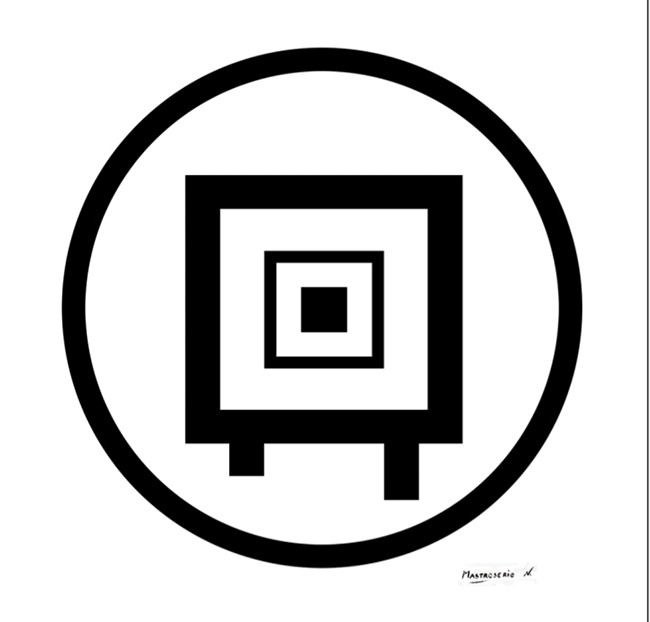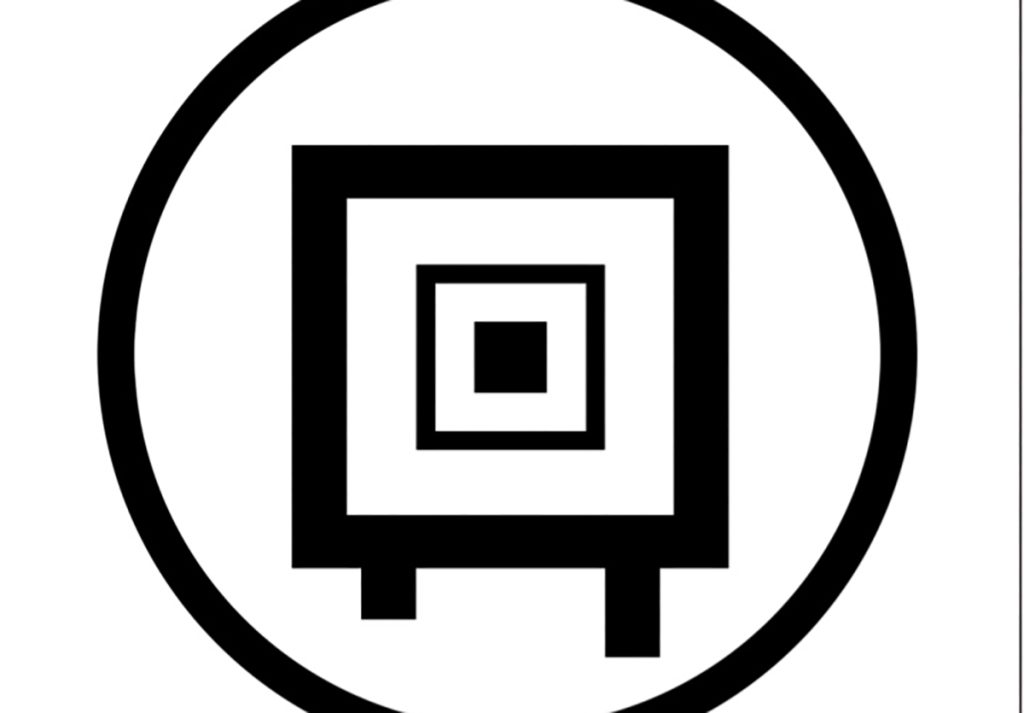Nicola Mastroserio does not chase trends. He does not cater to the art market’s hunger for commodification. Instead, he pursues something deeper—an exploration of reality that resists easy answers. His work is a meditation on existence, a quiet but persistent questioning of the nature of life, intelligence, and the unseen forces that shape our world. In his paintings there is no concern for spectacle, no gesture toward fashion. What matters is clarity of vision and an unwavering belief that art can hold values that transcend economics. He paints because he must, because he believes in art as a vessel for truth and human connection. That conviction sets him apart. It also explains why his work is not always easy, but always necessary. For Mastroserio, the canvas is not a commodity—it is a place where questions of peace, love, and brotherhood can take form.

The “Universal Symbol of Life”
Mastroserio’s “Universal Symbol of Life” is not just a painting. It is intended as a marker, a signpost, a gift. The work is an oil on canvas, 100 by 100 centimeters, square in form and balanced in intent. He describes it as something born from his heart, made not for himself, not for collectors, but for humanity. That alone sets it apart in a world where so much art is made to be bought, owned, and traded.
The symbol is designed as a point of unity. Its purpose is to bring together all human beings under a single recognition: that life is our most precious good. Mastroserio speaks of it as a clear reference for the future of humanity, a call to peace, love, and brotherhood without distinction. In a time when division often dominates headlines, this work insists on universality. It insists that humanity, in all its fractured states, can still be one people.
The painting carries a deep ethical charge. Mastroserio does not speak of art as separate from life. For him, the two are woven together. He describes the “Universal Symbol of Life” as protection—a kind of shield offered freely to every human being. Its value lies not in price, but in its capacity to remind us of our shared uniqueness and universality. He even declared the work to be in the public domain, not for sale. This is his gift, his offering, a refusal to participate in commodification.
That choice comes with cost. Mastroserio acknowledges the hardships he and his family endure by refusing to sell themselves to the market. He speaks openly of sacrifices—living without financial security, facing daily struggles, and yet holding to the belief that love and humanity are worth more than money. This honesty is woven into the fabric of the work. It is not just a symbol of life, but a symbol of commitment.
The “Universal Symbol of Life” is also collective in nature. Mastroserio insists that it is not the product of an isolated individual. Rather, it is a process that involves all of humanity. He envisions it as a univocal gesture, a line drawn that calls every person to collaborate, to work together as one universal people. This collective stance carries into his description of the future. He speaks of humanity as a “future cosmic civilization,” extending the meaning of the symbol beyond borders, nations, and even the present moment. It is art directed not just at now, but at what comes next.
In many ways, the work stands in contrast to much contemporary art. It does not traffic in irony or critique. It does not aim for spectacle or shock. Instead, it reaches for something older, something elemental. Symbols have always been humanity’s way of compressing vast ideas into forms we can hold, remember, and share. Mastroserio’s contribution is to offer a symbol not of a tribe, not of a nation, but of all life.
At its core, the painting is simple. A symbol on a canvas. Yet simplicity can carry weight when paired with sincerity. That is what Mastroserio offers here. A line, a sign, a gesture meant to endure. It is not bound to the gallery wall or the collector’s vault. It is meant to belong to everyone, a shared emblem of existence itself.
He ends his statement with gratitude. He thanks those who, with affection and support, are helping to promote this process for humanity. Gratitude, sacrifice, conviction—these words circle back to the heart of the “Universal Symbol of Life.” The work is less about aesthetics than about ethos. It is a call to remember what binds us. In that sense, it may be his most important contribution: an artwork that belongs to everyone, a reminder that life, fragile and fleeting, is still our greatest gift.

